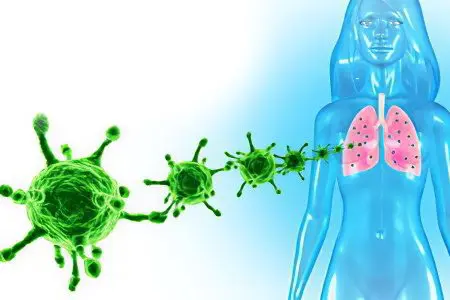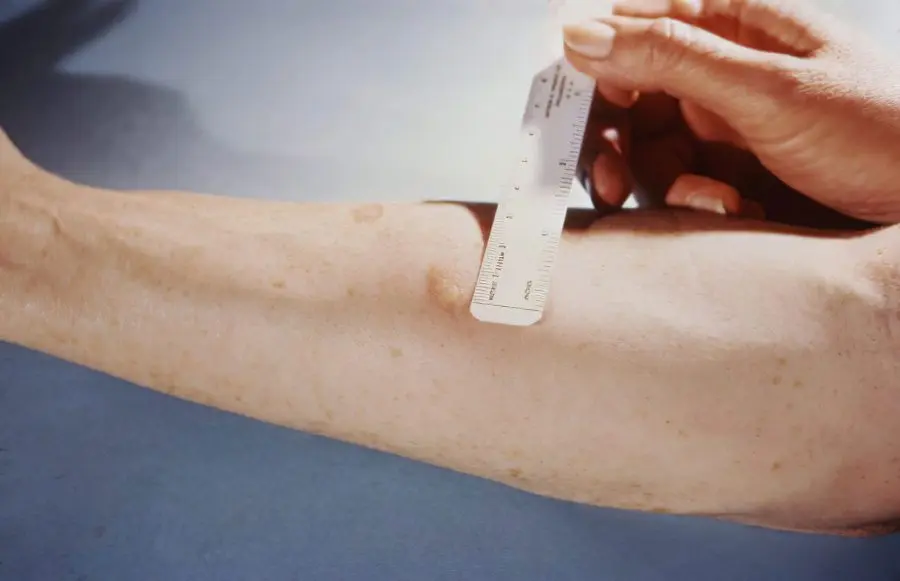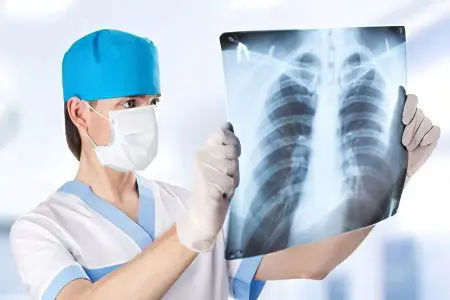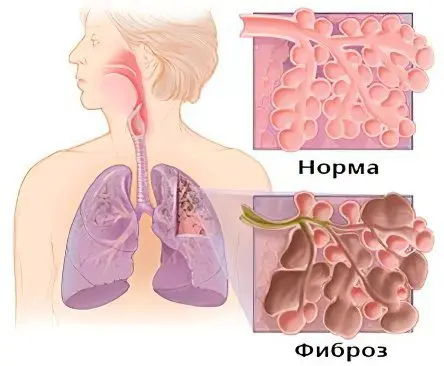Contents
Sarcoidosis is a fairly rare disease. On average, in our country, out of a hundred thousand people, only five cases of this disease are noted. This disease usually only affects the lungs. Sarcoidosis is a chronic inflammatory disease. The age of the patients is about thirty to forty years. The disease very rarely affects the body of the elderly and children.
Sarcoidosis of the lungs – what is it?

Sarcoidosis of the lungs is a systemic benign granulomatosis. With this disease, the lymphatic and mesenchymal tissues of the body are affected. In addition to the respiratory organs, other organs can also be affected by sarcoidosis. If the lungs are affected, then granulomas begin to form in them.
The disease can develop both in young people and in people of middle age (20-40 years). Most often, women suffer from sarcoidosis. If we consider the ethnic side of the issue, then the disease more often affects African Americans, Germans, Puerto Ricans, Irish, Scandinavians and Asians.
In sarcoidosis, granulomas form in the intrathoracic lymph nodes, in the bronchi and trachea, and in the lung tissue. The skin, eyes, liver, spleen, nervous system, salivary glands, joints, heart, kidneys, etc. can also suffer.
Granulomas are represented by giant and epithelioid cells. Sometimes sarcoidosis is confused with tuberculosis, since the granulomas in these diseases have a similar structure. However, in sarcoidosis, mycobacterium tuberculosis is not found inside the granulomas, and the lung tissue does not die.
First, the patient develops single granulomas. As the disease progresses, the foci of inflammation grow and merge. This leads to the main symptoms of sarcoidosis. Organs cease to perform their function. Ultimately, the neoplasms resolve, and scars remain in their place, represented by connective tissue.
The disease is not always limited exclusively to lung tissue, it spreads to other organs. Sarcoidosis goes through 3 stages of development, which will be discussed in the table.
Stages of development of sarcoidosis of the lungs:
Stages of development of the disease | Manifestations of the disease |
The first stage | The patient begins to damage the alveoli of the lungs. |
The second stage | The inflammatory process progresses, affects the vessels of the alveoli, later scars form in them, connective tissue grows. |
The third stage | The patient begins to form benign formations – granulomas. They affect subpleural tissues, peribronchial tissues, interlobar sulci of the lungs. |
As a result, granulomas either dissolve or lead to irreversible destruction of lung tissue. A person suffers from the fact that the lungs lose their ability to normal ventilation. This affects the function of breathing. Ventilation of the lungs becomes superficial, the lung lobe falls. This is due to the fact that the lymph nodes put pressure on the walls of the bronchi.
Treatment for sarcoidosis is long-term. For it to be as effective as possible, it is important to make a diagnosis as early as possible.
Symptoms of Sarcoidosis

With sarcoidosis, difficulty breathing occurs, in particular during physical exertion. Also, the symptoms of sarcoidosis include a person’s weight loss, lack of appetite, fever, fatigue. Lethargy, muscle weakness, dry cough may occur.
With sarcoidosis, intrapulmonary lymph nodes are affected, which, in general, does not affect the health and condition of a person at first. Therefore, the disease can be detected using x-rays, and this is all despite the fact that the disease affects, as a rule, only the lungs.
Symptoms of sarcoidosis also include hemoptysis, shortness of breath, dry cough, and chest pain. If the disease has been going on for a long time and in a severe form, then pulmonary fibrosis and a decrease in respiratory function occur due to inflammatory changes in the lungs.
With sarcoidosis, changes can occur in the eyes, joints, skin, and lymph nodes. If the disease is not treated, then a person can go blind. The heart, kidneys, liver, brain, and many other organs inside a person’s body can also be affected.
Erythema is one of the specific signs of sarcoidosis. It is manifested by reddening of the skin, as a lot of blood flows to it.
These symptoms should not be ignored, it is necessary to consult a doctor and find out their cause. When listening to the lungs, the doctor will hear wheezing, which can be wet, dry or spilled.
If the disease does not proceed according to the pulmonary type, then the skin, eyes, lymph nodes, and salivary glands may suffer in a person.
At the last stage of the development of the disease, the patient develops symptoms of such pathologies as: emphysema, pneumosclerosis, pulmonary and heart failure.
Causes of sarcoidosis of the lungs

Sarcoidosis is a disease of unknown etiology. Experts put forward various versions of its origin. The infectious theory boils down to the fact that the disease is provoked by fungi, mycobacteria, protozoa, histoplasmas, spirochetes and other pathogenic flora.
There is a theory that sarcoidosis can be inherited, as there are known cases of the disease in the circle of blood relatives.
Experts indicate some risk factors that increase the likelihood of developing the disease:
exogenous factors. They come down to the effects of irritants on the tissues of the lungs, for example, chemicals, dust, viruses, bacteria, etc.
endogenous factors. This includes pathological processes occurring within the body itself, in particular, autoimmune diseases.
Today, sarcoidosis is considered a polyetiological pathology. Its development involves a biochemical, genetic, immune and morphological component.
The professional activity of a person diagnosed with sarcoidosis deserves special attention. It has been established that people working in the agricultural industry, sailors, doctors, postal workers, firefighters, millers and mechanics most often suffer from the disease. There is also an increased risk of sarcoidosis in factory workers.
Long-term smokers are more susceptible to lung sarcoidosis than non-smokers. Their lung function is weakened by the regular intake of tar, nicotine and combustion products.
Types and stages of sarcoidosis
Depending on the course of the disease, there are such types of sarcoidosis as:
Progressive.
Delayed.
Chronic.
Abortive.
The disease goes through three stages of development. All of them are described in the table.
Stages of development of sarcoidosis of the lungs:
The first stage | The second stage | The third stage |
The patient has enlarged paratracheal, tracheobronchial and bifurcation lymph nodes. The lesion may be asymmetric or bilateral. | The disease progresses, spreading through the vessels and lymphatic tracts. Granulomas can be focal or small (miliary form of the disease). The lung tissue begins to be replaced by a substrate with increased density. Lymph nodes continue to be affected. | Connective tissue begins to grow in the alveoli, which subsequently scars. The likelihood of developing pneumosclerosis and emphysema increases. |
Sarcoidosis varies depending on the location of the pathological process. Granulomas can begin to form in the lymph nodes located in the chest, in the lungs and in the lymph nodes at the same time, separately in the lungs. Sometimes granulomas develop in the organs of the respiratory system and in other organs, or throughout the body.
Phases of the development of the disease:
acute phase.
The stabilization phase, when the progression of the disease stops.
The regression phase, characterized by the reverse development of the disease.
In the regression phase, the granulomas will dissolve. The formations in the lymphatic system and in the lungs will calcify and become dense.
Possible complications
Sarcoidosis of the lungs is accompanied by such complications as:
Pneumosclerosis. In this disease, normal lung tissue is replaced by connective fibers. The lungs lose their elasticity, gas exchange worsens in them, and respiratory function suffers.

Emphysema of the lungs. The partitions that exist between the alveoli are destroyed, and the alveoli themselves expand. Emphysema can be diffuse and bullous.

Adhesive pleurisy. The disease is accompanied by an inflammatory process, which involves the pleura. Adhesions are formed in it, which fix and immobilize the lung tissue. Fluid begins to accumulate inside the lungs, their volume decreases, which affects the function of breathing.
Fibrosis of the lungs. Scar tissue grows in the organs, they lose their elasticity, a person with fibrosis cannot breathe normally. This process is irreversible.

Tuberculosis, nonspecific pneumonia, aspergillosis. All these diseases can be a consequence of sarcoidosis.
Death. A person can die due to complications of the disease. However, this only happens when the patient does not receive treatment.
Diagnosis of sarcoidosis of the lungs
All patients with suspected pulmonary sarcoidosis are referred for a blood test. In this case, an increase in the level of leukocytes, monocytes, ESR, lymphocytes, eosinophils will be detected. At an early stage of the development of the disease, the values of beta-globulins and alpha-globulins increase.
The patient is also referred for an x-ray of the lungs. More information on the disease is provided by such hardware diagnostic procedures as CT or MRI. The patient will have enlarged lymph nodes. A phenomenon such as a backstage symptom is diagnosed, when the shadow of one lymph node overlaps the others.
Another test to diagnose sarcoidosis is the Kveim reaction. In this case, the patient is injected subcutaneously with 0,2 ml of the sarcoid-type antigen and the reaction of the body is assessed. If a red bump appears at the injection site, this indicates sarcoidosis.

The patient may be scheduled for a bronchoscopy. At the same time, dilated vessels of the mouths of the bronchi, enlarged bifurcation lymph nodes are found. The bronchi undergo atrophic or deforming changes, they show sarcoid tubercles, warts and plaques.
During bronchoscopy, tissues of the affected area are taken. They are then examined under a microscope. Particles of granulomas are found in the tissues.
Treatment

It often happens that a person who has sarcoidosis recovers on his own after a while. But at the same time, in any case, serious and careful monitoring by a doctor is necessary. The doctor will be able to understand the cause of the disease, the duration of the disease and prescribe the medicines necessary so that the disease does not affect the vital organs further.
Without any therapy, the disease resolves on its own in about 30% of patients. The rest of the people need medication. Serious complications of the disease develop, on average, in 30% of patients.
If not treated promptly, sarcoidosis can lead to blindness and respiratory failure. Doctors warn such complications when prescribing corticosteroid hormones to the patient. The more severe the pathology, the worse the prognosis. In rare cases, lung sarcoidosis is fatal.
If the disease is inactive, then the patient needs to undergo an examination by a doctor once a year and do a chest x-ray in order to control the disease.
Sometimes sarcoidosis can go into unexpected remission. Therefore, the patient is not prescribed treatment immediately. The doctor observes the patient for some time, if regression does not occur within 7-8 months, then the patient is prescribed treatment. Therapy is indicated for patients with severe sarcoidosis, with its active progression, with the appearance of granulomas in other organs, as well as with lesions of the thoracic lymph nodes and with large foci of inflammation.
The patient is prescribed drugs for a period of six months to 8 months.
For this purpose, drugs such as:
Steroid hormones. Treatment begins with minimal dosages.
NSAIDs.
Immunosuppressants.
Antioxidants.
During hormone therapy, the patient must adhere to a protein diet. It is important to limit your salt intake. Also, patients are prescribed potassium supplements and anabolic steroids.
Most often, therapy is carried out on an outpatient basis. Hospitalization is rarely required. If the disease responds well to treatment, then after its completion, a person will have to be registered with a dispensary for 2-5 years.
[Video] Elena Malysheva’s broadcast “How to beat sarcoidosis?”:












